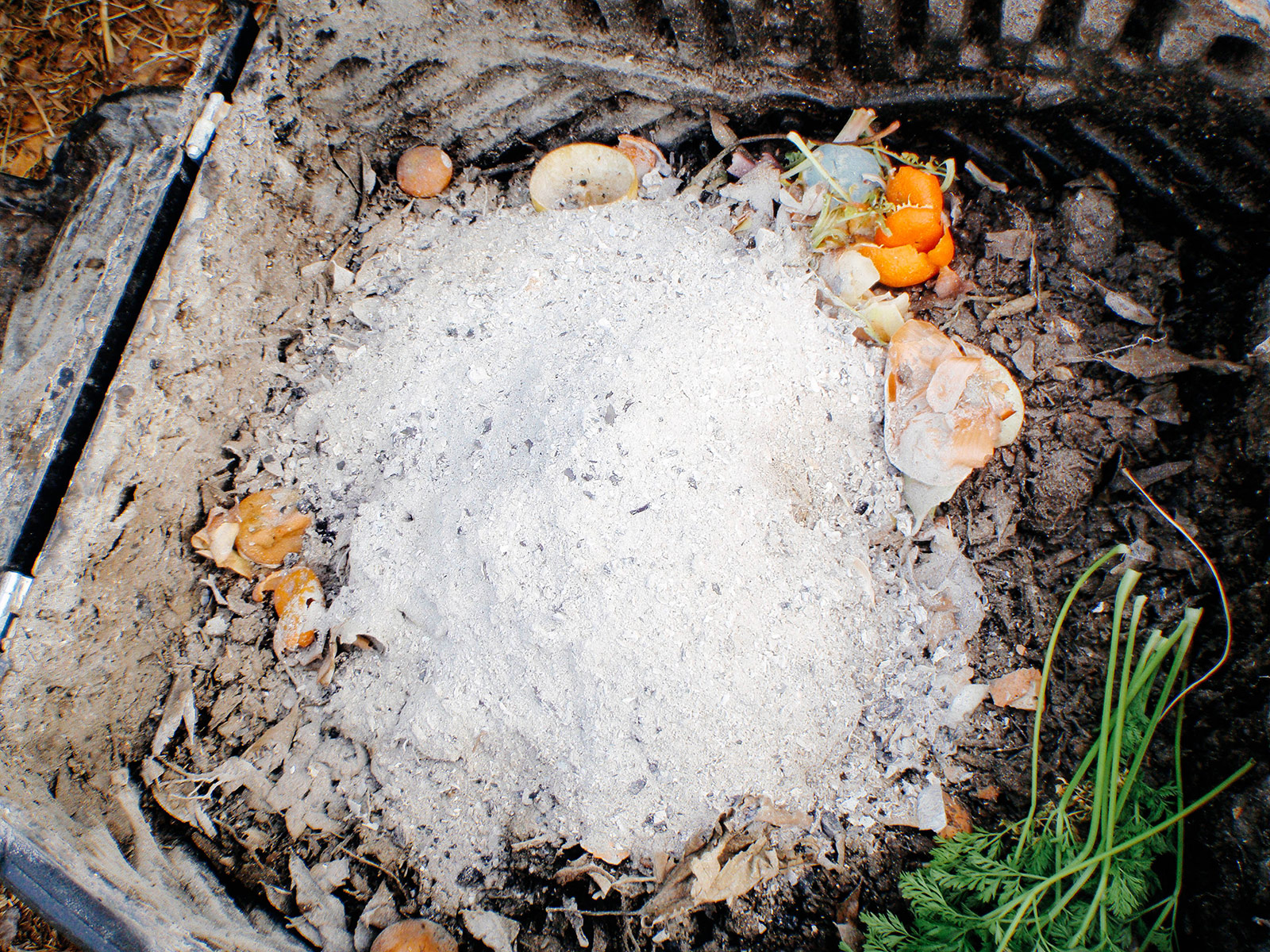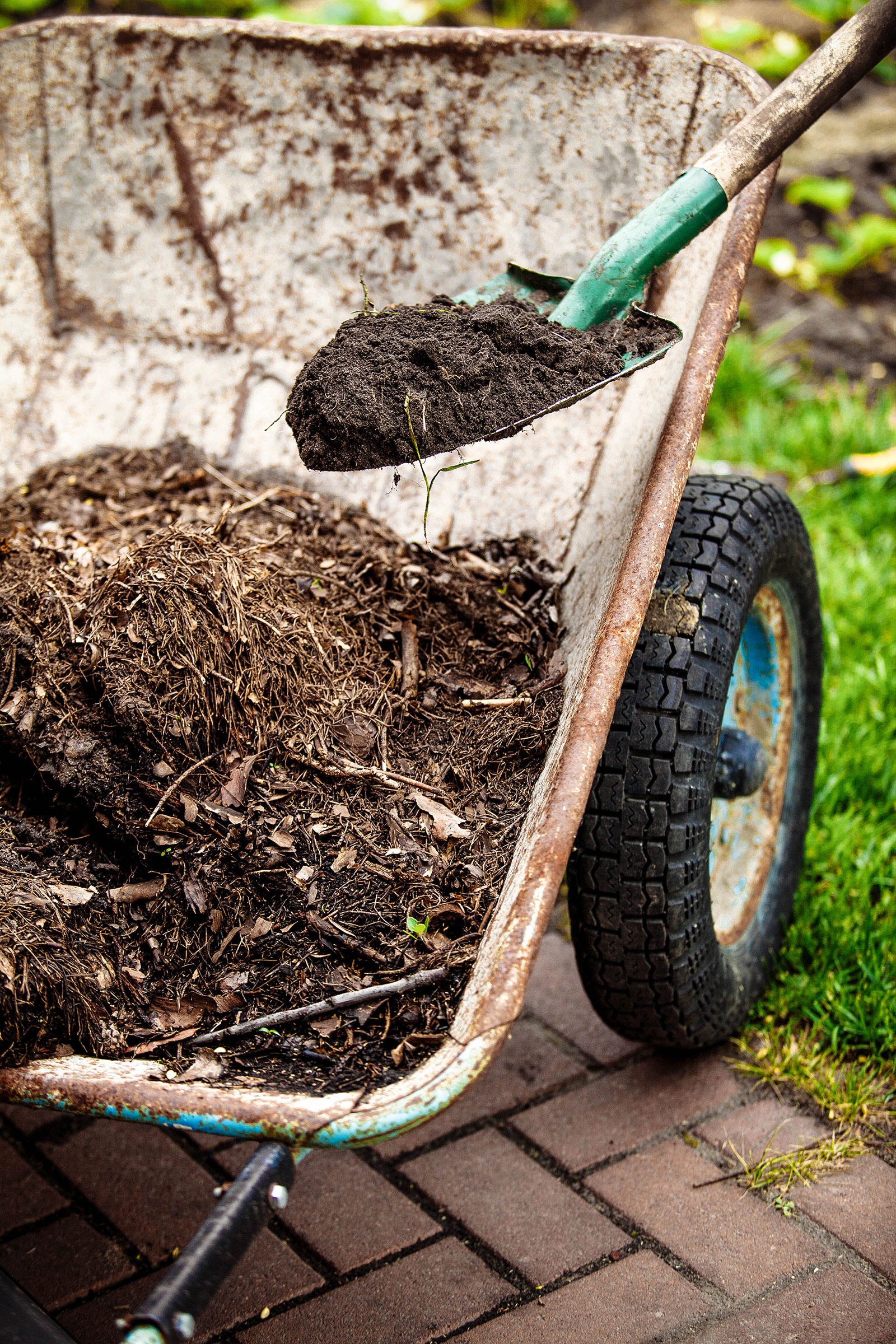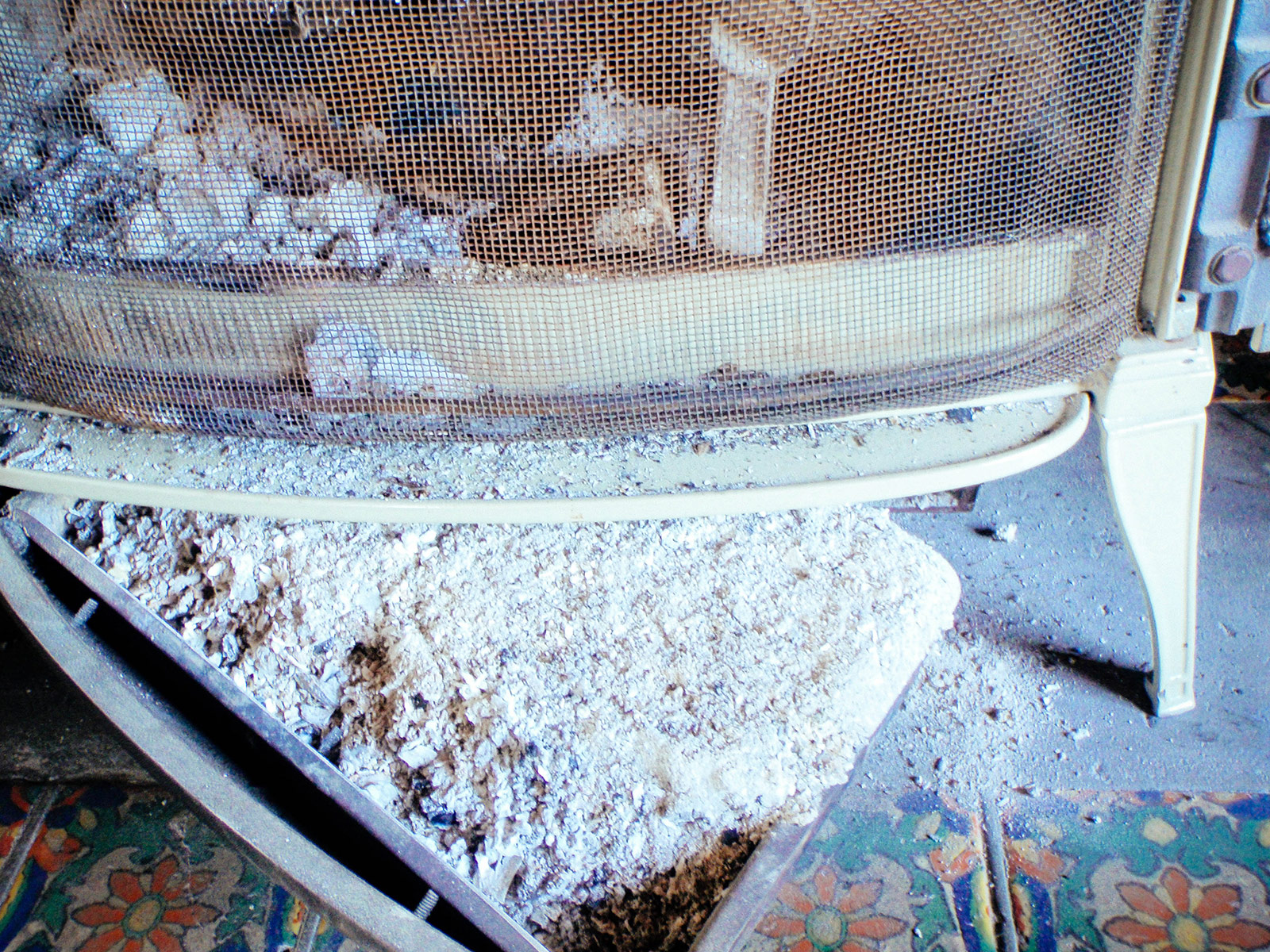The other week I was doing some spring cleaning and clearing out the last remnants of our cold weather—the wood ash from our potbelly stove.
But what exactly can you do with those ashes, besides tossing them in the trash?
Well, if you have a compost bin, this natural source of potassium and phosphorus helps maintain the pH balance of your compost heap while it decomposes.
Since wood ash is derived from plant material, it’s an effective organic fertilizer that contains beneficial nutrients for plant growth. The fertilizer value of wood ash depends on the type of wood burned: Hardwoods, such as oak, contain higher amounts of nutrients than softwoods like pine.
Assuming you didn’t burn synthetic starter logs or treated wood, that pile of ash from your fireplace is full of potassium carbonate (also known as potash) that adds the necessary carbon (brown material) to your compost.
Since I have a large compost bin that tends to be very acidic, I like to dump the wood ash into my compost tumbler and give it a few good spins. If your compost is smaller, you can save your wood ash and sprinkle a thin layer every time you add more scraps to your bin (especially acidic scraps, such as citrus peels or coffee grounds).

Besides wood ash, what other household waste can be composted?
You likely already know that you can compost most kitchen scraps: eggshells, vegetable peels, spoiled fruit, and the odds and ends from your crisper bin.
And technically, you can compost any organic material out there… but I’m not going to list some of the stranger stuff you may have heard about, because let’s face it, are you really going to compost your nail clippings or shed dog fur?
Here’s a practical list of items around the house that will break down easily in your compost bin and make rich, nutritious compost for your garden.

Weird things you can compost
From your kitchen
Leftover beer from parties – Now you can’t be too mad at your friends! The yeast makes beer a good compost activator, but only add enough liquid to keep your compost moist, not soggy.
Wine past its prime – If you don’t want to turn it into vinegar, add a small amount to your compost pile—it’s another good compost activator.
Wine corks – The crumblier the cork, the better.
Wooden popsicle sticks – Snap them in half so they break down faster.
Paper egg cartons – Rip this up into smaller pieces for faster composting.
Paper coffee filters and tea bags – Tear the used coffee filters apart first, and make sure to remove any staples from your used tea bags before putting them in your compost.
Coffee grounds – Some people sprinkle coffee grounds around their plants as fertilizer, but composting is a much better use for them.
Nut shells – Peanuts, pistachios, and other shells are all great for your compost.
Old spices and dried herbs – Spices start to lose their potency after 6 to 12 months, but you can recycle them into the compost rather than throwing them out.
Stale bread, cereal, crackers, and tortillas – If you’re cleaning out your pantry, see what can be composted rather than trashed.
Burnt toast – Crumble it apart before tossing it in your compost.
Cooked plain pasta and rice – This is what I do with leftover rice that’s dried out in the fridge.
Fruit and vegetable pulp from a juicer or food mill – Treat the pulp like any other fruit and vegetable waste that goes in your compost.
Freezer-burned vegetables – Did you forget about that carrot and pea medley in the back of your freezer? Throw them in the compost heap.
From your house
Wood ash – Make sure you didn’t burn any treated, stained, or painted wood.
Shredded paper – If you have a paper shredder at home, this is an easy source of carbon for your compost pile. Just try to stay away from glossy inserts and magazines.
Dead flower bouquets and houseplants – Once you’ve enjoyed them in your home, compost them so they can go back into the earth and nourish your other plants.
Tissues and cotton balls – As long as they weren’t soaked in nail polish remover or other chemicals, they’re fine to compost.
Paper towels and napkins – Just don’t add paper materials that have grease on them, since they can attract varmints.
Cage litter from small pets (birds, rabbits, hamsters) – Chicken manure isn’t the only poop that’s good for your compost!
Aquarium water and plants – When you’re cleaning your fish tank, pour the dirty water in your compost (along with any unwanted plants).
Human urine – Sshhh, don’t tell my husband this! (Actually, he’s very pro-pee as a fertilizer and often urinates on our landscaping, insisting he’s helping our plants! Haha.) Human urine is high in nitrogen as well as phosphorus and potassium, and, well—it can be delivered in a form that’s perfect for assimilation. Don’t let this free source of fertilizer go to waste. (Easier said than done for women, of course.)
Pomace – For you homebrewers out there, winemaking waste (either fermented or unfermented) is the perfect thing to put in your compost!
Spent hops and spent grains – Here’s another excellent use for homebrewing waste. Note that dog owners should keep their compost secure and inaccessible, as spent hops and grains are toxic to dogs if ingested.

From your yard
Weeds – To avoid spreading more weeds throughout your garden, make sure these have no flowers or seed heads and are completely dried out and dead.
Grass clippings – If you don’t leave this on your lawn as mulch, your compost loves them as a nitrogen source.
Fallen leaves – Don’t bag them up and leave them on the curb for garbage pickup! Fall leaves are a very good source of carbon for your compost. Leaves should be shredded for quicker decomposition, but if you don’t have time for that, mix a small amount of leaves in each time you add green materials (like kitchen scraps) to help balance the nitrogen and absorb excess moisture.
Pine needles – Contrary to popular belief, pine needles will not turn your compost acidic. But they do take a while to break down, so should be used sparingly. Personally, I think they’re better off used as mulch, especially if you have a lot.
Recycled newspaper pots – You can bury these in the garden when you transplant your seedlings, or you can compost them.
Sawdust – Make sure it came from a clean wood source (not plywood).
This post updated from an article that originally appeared on May 13, 2011.
View the Web Story on weird things you can compost.
















Your ideas are awe-inspiring! I must try so many of your ideas. I’m in my 70’s and began planting a garden for the first time in 2020! your suggestions ignite the need in me to do more with less!!!
Thank you!
I’m so happy to hear that Linda!
I’ve also put old flour, Bisquick, packaged muffin mix, etc. in my compost. It seems to mix in well.
Wood ash is mostly alumina and silica, which are both also good for compost/plants. All the minerals are in oxide form because it’s been combusted (oxidised) not carbonate. A carbonate would be acidic, but you’re correct in saying that the ash is alkaline and will balance acidic compost additions. I use wood ash around fruit trees, on my garden and in my compost.
This is so fascinating! I had no idea that there were so many things that could be composted. I’m definitely going to start doing this more often. Thanks for the informative post!
Interesting! I’ve always seen bags of gypsum at the nursery. Thanks for the tip!
Hi , I love your garden site. I have another item to add to your list of “other items to add to the Compost list. It’s gypsum board : http://en.wikipedia.org/wiki/Drywall
I got the idea from an older gentleman in my home town who has been gardening for 40 years. Gypsum is a great source of “Calcium” which is so necessary for growing tomatoes and peppers!
we also compost our junk mail and any mail that has our name/address etc that one might typically shred. paper breaks down in no time!
Smart!